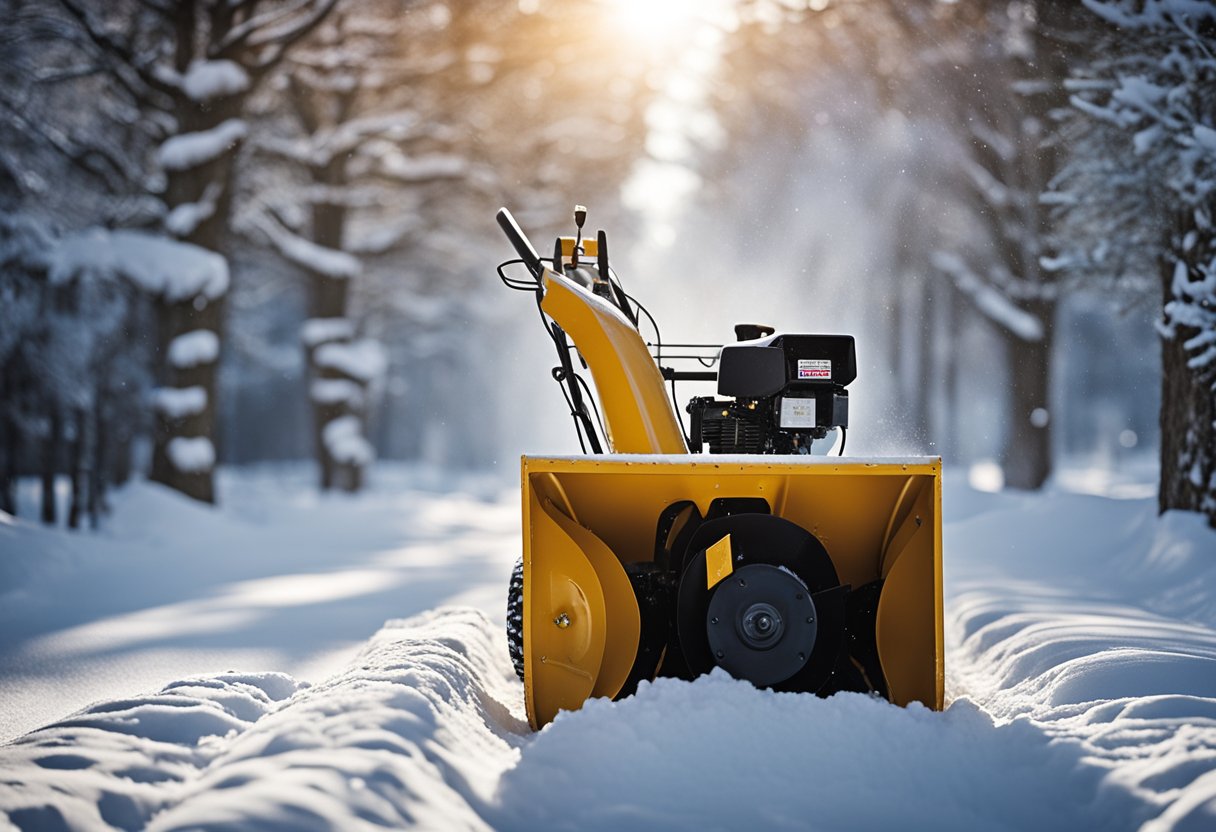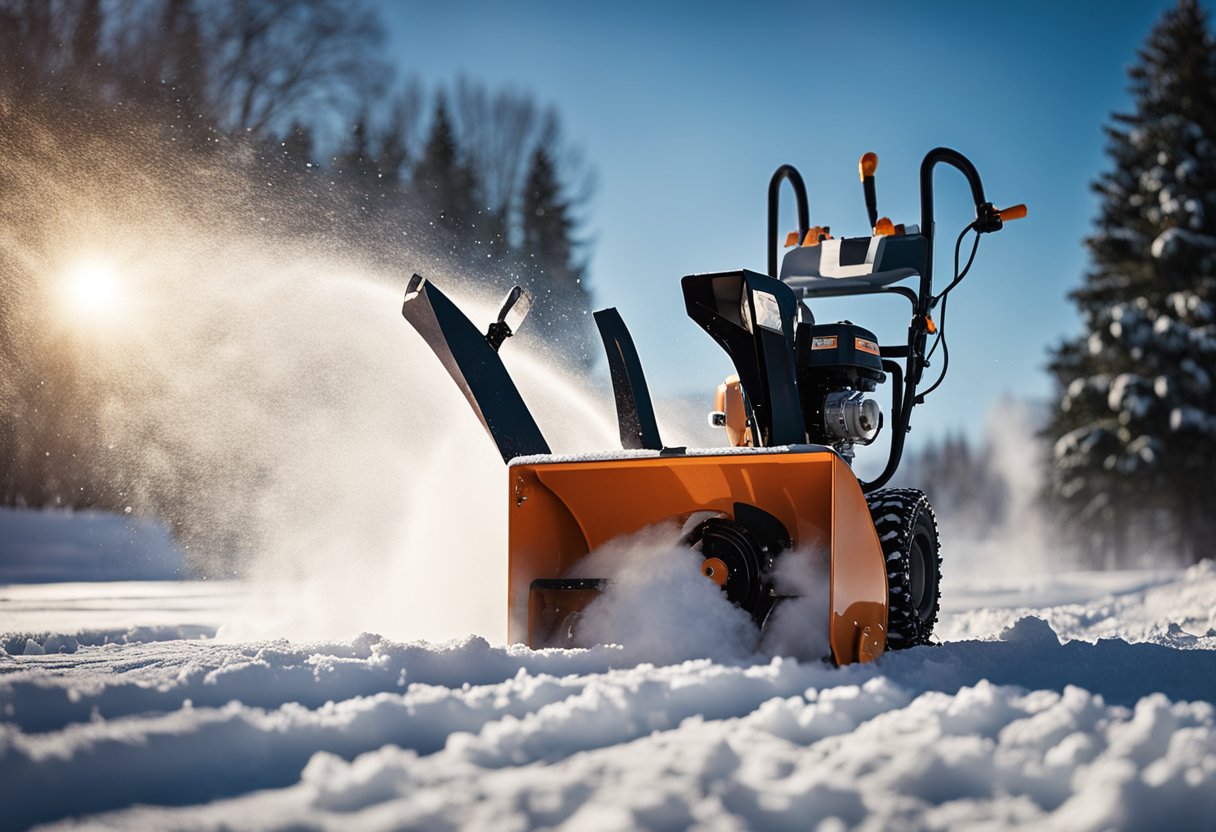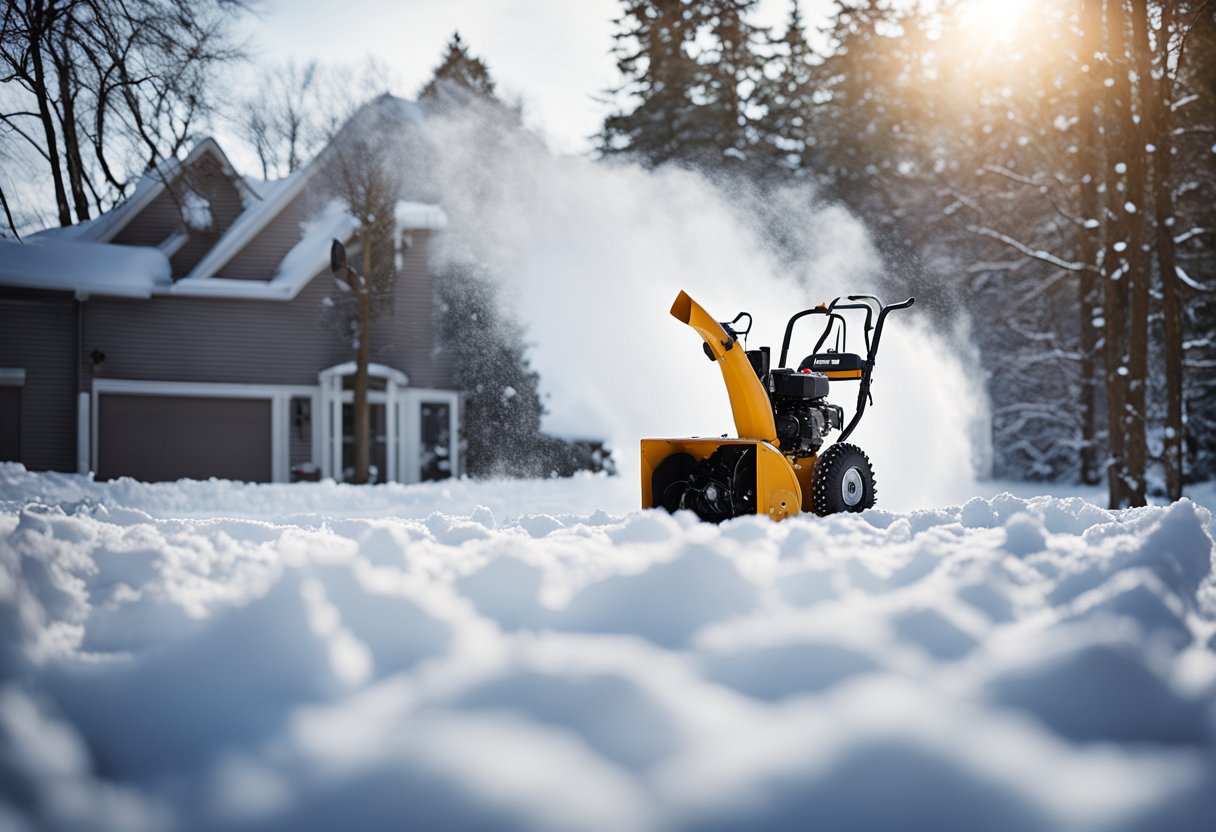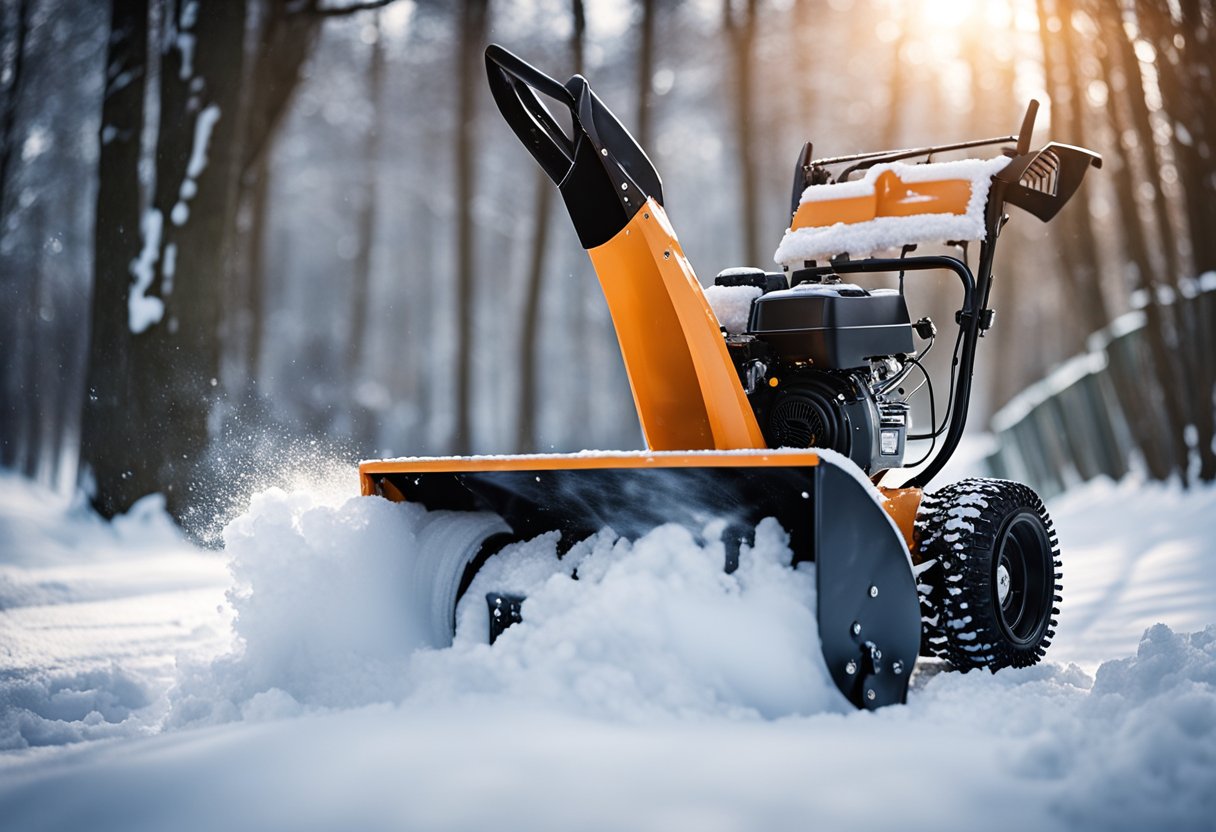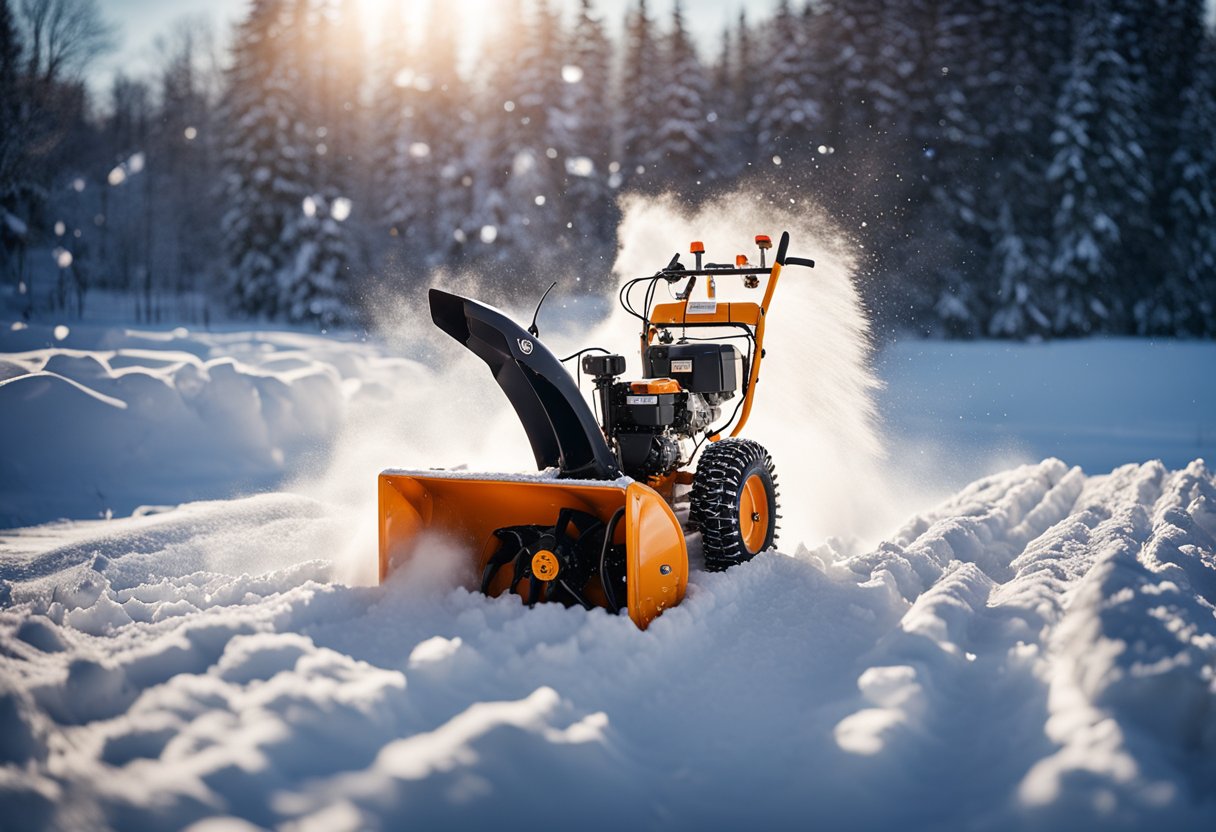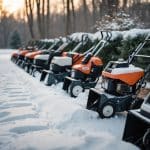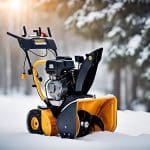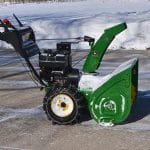Snow blowers, also known as snow throwers, are machines used to clear snow from driveways, sidewalks, and other areas. They come in different types, sizes, and designs, and can be powered by gas, electricity, or battery. Snow blowers are essential tools for homeowners and businesses in areas with heavy snowfall, as they save time and effort compared to shoveling.
There are two main types of snow blowers: single-stage and two-stage. Single-stage snow blowers are designed for light to moderate snowfalls and work by using an auger to scoop up the snow and throw it out of the chute. Two-stage snow blowers, on the other hand, are more powerful and are used for heavy snowfalls and larger areas. They have an auger that scoops up the snow and a fan that throws it out of the chute. Two-stage snow blowers are more expensive than single-stage ones but are more efficient and can handle larger volumes of snow.
When choosing a snow blower, there are several factors to consider, such as the size of the area to be cleared, the type of snow, and the terrain. Other factors to consider include the power source, design features, performance, and safety considerations. By choosing the right snow blower, homeowners and businesses can save time and effort and ensure their safety during snow removal.
Key Takeaways
- Snow blowers come in different types, sizes, and designs, and can be powered by gas, electricity, or battery.
- There are two main types of snow blowers: single-stage and two-stage, with two-stage snow blowers being more powerful and efficient.
- When choosing a snow blower, factors to consider include the size of the area to be cleared, the type of snow, terrain, power source, design features, performance, and safety considerations.
Types of Snow Blowers
When it comes to snow blowers, there are different types available to suit various snow removal needs. Understanding the differences between single-stage, two-stage, and three-stage snow blowers can help individuals make an informed decision when purchasing one for their specific requirements.
Single-Stage Snow Blowers
Single-stage snow blowers are designed for light to moderate snowfall. They are typically compact and easy to maneuver, making them suitable for smaller areas. These electric models are best for clearing snow up to around 8 inches deep. They work by using an auger to scoop up the snow and direct it out of the chute in one motion.
Two-Stage Snow Blowers
Two-stage snow blowers are more powerful and efficient, making them suitable for areas that experience heavier snowfall. They are equipped with an impeller that can throw snow farther and are ideal for clearing larger areas. These machines can handle deeper snow and are available in both electric and gas-powered models.
Three-Stage Snow Blowers
Three-stage snow blowers are designed for heavy-duty snow removal, particularly in areas that experience deep snow accumulation. These models, such as the Troy-Bilt Arctic Storm, are equipped with an accelerator that helps break up ice and snow, making them highly effective for clearing large and deep snowdrifts. They are typically gas-powered and offer enhanced efficiency and power for challenging snow removal tasks.
Power Sources
When it comes to snow blowers, there are two main types of power sources: gas-powered and electric. Each has its own advantages and disadvantages, and the choice between the two will depend on your specific needs.
Gas-Powered Snow Blowers
Gas-powered snow blowers are known for their performance and power, making them a popular choice for those who need to clear large areas of snow. These machines are typically more expensive than electric models, but they are also more powerful and can handle heavier snowfalls.
One of the main advantages of gas-powered snow blowers is that they don’t require an electrical outlet, which means you can use them anywhere. They are also cordless, which makes them more convenient to use than corded electric models.
However, gas-powered snow blowers require more maintenance than electric models. They need to be filled with gas and oil, and the engine needs to be regularly serviced to ensure optimal performance. They are also louder than electric models and produce emissions, which can be a concern for those who are environmentally conscious.
Electric Snow Blowers
Electric snow blowers are available in two types: corded and battery-powered. Corded electric snow blowers are typically less expensive than gas-powered models and are ideal for those who need to clear smaller areas of snow. They are also quieter than gas-powered models and produce no emissions.
Battery-powered snow blowers, like the EGO Power+ snow blower, are cordless and offer greater mobility than corded models. They are also more powerful than corded electric models and can handle heavier snowfalls. However, they are typically more expensive than corded electric models and require regular charging.
One of the main advantages of electric snow blowers is that they require less maintenance than gas-powered models. They don’t need to be filled with gas or oil, and the engine doesn’t need to be serviced. They are also quieter and produce no emissions, which makes them a popular choice for those who are environmentally conscious.
In summary, the choice between gas-powered and electric snow blowers will depend on your specific needs. Gas-powered models are more powerful and can handle heavier snowfalls, but they require more maintenance and produce emissions. Electric models are quieter and require less maintenance, but they are typically less powerful and may not be suitable for heavy snowfalls.
Design Features
Snow blowers come in different shapes and sizes, but most models share some common design features that make them effective at clearing snow. This section will cover some of the most important design features that you should consider when shopping for a snow blower.
Adjustable Discharge Chute
One of the most important design features of a snow blower is the adjustable discharge chute. The discharge chute is the part of the machine that throws the snow out of the way. An adjustable discharge chute allows you to control the direction and height of the snow that is thrown, making it easier to clear your driveway or sidewalk.
Snow Blower Shoes
Another important design feature of a snow blower is the shoes. Snow blower shoes are the metal plates that rest on the ground and help to regulate the height of the machine. They are adjustable and can be raised or lowered to match the height of the snow that you are trying to clear. This feature helps to prevent the snow blower from digging into the ground and damaging your driveway or sidewalk.
LED Headlights
LED headlights are a design feature that can make using a snow blower safer and more convenient. They provide additional visibility when you are clearing snow in low light conditions, such as early in the morning or late at night. LED headlights are also energy efficient and long-lasting, so you won’t have to worry about replacing them anytime soon.
In summary, a snow blower’s design features play a crucial role in its usability and safety. An adjustable discharge chute allows you to control the direction and height of the snow that is thrown, snow blower shoes help to regulate the height of the machine, and LED headlights provide additional visibility in low light conditions. When shopping for a snow blower, consider these design features to ensure that you get a machine that is safe, effective, and easy to use.
Performance and Usability
Snow blowers are a popular tool for snow removal, but their performance and usability can vary widely depending on the model. In this section, we will discuss some key features that affect the performance and usability of snow blowers.
Self-Propelled Mechanism
One of the most important features of a snow blower is its self-propelled mechanism. This feature allows the blower to move forward on its own, which can make it easier to use and more efficient at removing snow. Some models have a single-speed self-propelled mechanism, while others have multiple forward speeds. The self-propelled mechanism can be controlled using levers or buttons on the handlebars.
Multiple Forward Speeds
Multiple forward speeds can be a useful feature, as they allow the user to adjust the speed of the blower to match the conditions of the snow. For example, a slower speed may be better for heavy, wet snow, while a faster speed may be better for lighter, fluffier snow. Some models also have a reverse gear, which can be useful for backing out of tight spaces.
Handling and Mobility
The handling and mobility of a snow blower can also affect its performance and usability. Models with wheels are generally easier to maneuver than those with tracks, but tracks can provide better traction in deep snow. Some models also have features like power steering or joystick controls, which can make them easier to handle.
Overall, the performance and usability of a snow blower depend on a variety of factors, including the self-propelled mechanism, forward speeds, handling, and mobility. When choosing a snow blower, it’s important to consider these factors and choose a model that meets your specific needs and preferences.
Safety Considerations
When using a snow blower, safety should always be a top priority. Snow blowers can be dangerous if not used properly, and can cause serious injury or even death. Therefore, it is important to follow safety guidelines and take necessary precautions.
Operational Safety
To ensure operational safety, it is important to read and understand the manufacturer’s manual thoroughly before using the snow blower. Familiarize yourself with the machine’s features, controls, and safety precautions. Understanding the equipment’s operation will help you use it more effectively and avoid potential accidents. Always wear the right gear, including goggles or glasses to protect your eyes from flying debris, and boots with traction to avoid slipping.
It is also important to clear the pathways you intend to use before it even snows. Snow can hide objects that could clog the snow blower’s chute, cause damage to the machine, or even injure people nearby. Never drink alcohol or use narcotics before using your snow blower, as this can impair your judgment and reaction time.
Maintenance and Storage
Proper maintenance and storage of the snow blower is also crucial for safety. Always make sure the machine is turned off and the key is removed before performing any maintenance or repairs. Keep the machine clean and free of debris, and inspect it regularly for any signs of wear or damage. If any parts need to be replaced, use only genuine manufacturer parts.
When storing the snow blower, always keep it in a dry and secure location, out of the reach of children. Drain the fuel tank and run the engine until it stops to prevent the fuel from gumming up the carburetor. Store the machine with the auger and impeller disengaged to prevent accidental start-up.
By following these safety considerations, you can ensure that your snow blower operates safely and effectively. Remember, safety should always be the top priority when operating any machinery.
Note: For more detailed safety guidelines, refer to the Snow Blower Safety Tips provided by The Hand Society.
Choosing the Right Snow Blower
When it comes to choosing the right snow blower, there are a few factors to consider. This section will cover two main subsections: “Assessing Snow Removal Needs” and “Comparing Brands and Models”.
Assessing Snow Removal Needs
The first step in choosing the right snow blower is to assess your snow removal needs. Consider the size of your driveway, the amount of snowfall in your area, and the type of snow you typically deal with. If you live in an area with heavy snowfall or deep snow, you’ll need a snow blower with a powerful engine and wide clearing width.
Another factor to consider is the value of the snow blower. While a more expensive model may have more features, it may not be necessary for your specific needs. It’s important to find a balance between the features you need and the price you’re willing to pay.
Comparing Brands and Models
Once you’ve assessed your snow removal needs, it’s time to compare brands and models. Some popular brands to consider include Ego Power+ and Troy-Bilt.
When comparing models, look for key features such as clearing width, engine power, and ease of use. It’s also important to read reviews from other customers to get an idea of the snow blower’s performance in real-world situations.
In conclusion, choosing the right snow blower requires assessing your snow removal needs and comparing brands and models. By taking the time to research and compare, you can find a snow blower that meets your needs and fits your budget.
Frequently Asked Questions
What are the key differences between single-stage and two-stage snow blowers?
Single-stage snow blowers are ideal for clearing snow from small driveways or walkways. They are lightweight and easy to maneuver, making them perfect for homeowners who don’t want to deal with the hassle of shoveling snow. Two-stage snow blowers, on the other hand, are designed for larger areas with heavier snowfall. They have a more powerful engine and can clear snow up to 28 inches wide. They also have an auger that breaks up snow and ice, and an impeller that throws the snow out of the chute.
How do I choose between a gas, electric, or cordless snow blower?
Gas-powered snow blowers are the most powerful and are ideal for heavy snowfall and large driveways. They are also the most expensive and require regular maintenance. Electric snow blowers are quieter and easier to maintain, but they are less powerful and have a limited range. Cordless snow blowers are lightweight and easy to maneuver, but they have a limited battery life and are not suitable for heavy snowfall.
What should I consider when selecting a snow blower for a large driveway?
When selecting a snow blower for a large driveway, it is important to consider the width of the clearing path, the engine power, and the type of tires. A snow blower with a clearing path of at least 28 inches is ideal for large driveways. A powerful engine with at least 8 horsepower is also necessary to handle heavy snowfall. Additionally, snow blowers with large, pneumatic tires are easier to maneuver over uneven or snowy terrain.
Which features are most important when looking for a durable and efficient snow blower?
When looking for a durable and efficient snow blower, it is important to consider the build quality, the engine power, and the chute control. Snow blowers with a sturdy steel frame and a durable plastic body are built to last. A powerful engine with at least 8 horsepower is necessary to handle heavy snowfall. Finally, a snow blower with a chute control that allows you to adjust the direction and angle of the snow discharge will make your job easier and more efficient.
How does the performance of top snow blower brands compare?
According to Consumer Reports, the top snow blower brands are Toro, Honda, and Cub Cadet. These brands consistently receive high ratings for performance, reliability, and ease of use. Toro, in particular, has a wide range of snow blowers to choose from, including single-stage, two-stage, and three-stage models.
What maintenance steps are essential to keep a snow blower in optimal condition?
To keep a snow blower in optimal condition, it is essential to perform regular maintenance tasks, such as changing the oil, checking the spark plug, and lubricating the auger and impeller. It is also important to store the snow blower properly during the off-season, such as draining the fuel tank and storing it in a dry, covered area. Following the manufacturer’s instructions for maintenance and storage will help ensure that your snow blower lasts for many winters to come.

